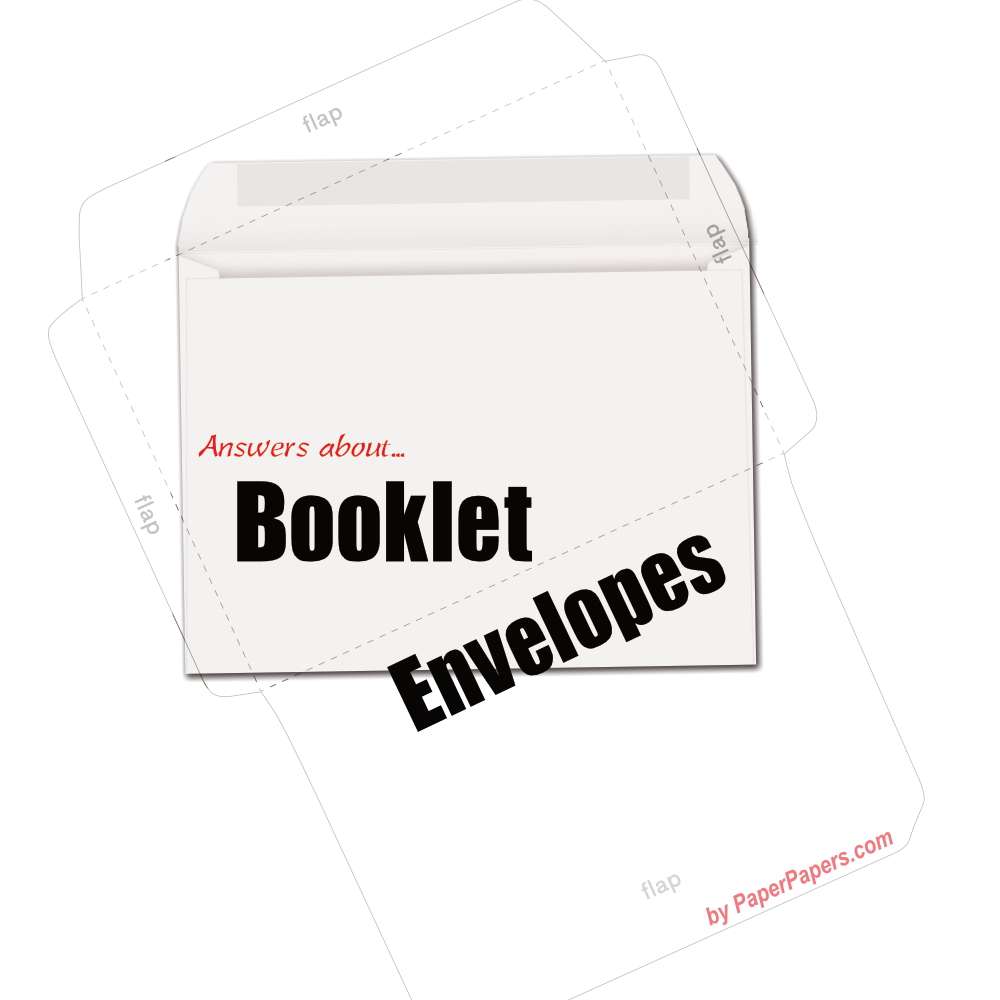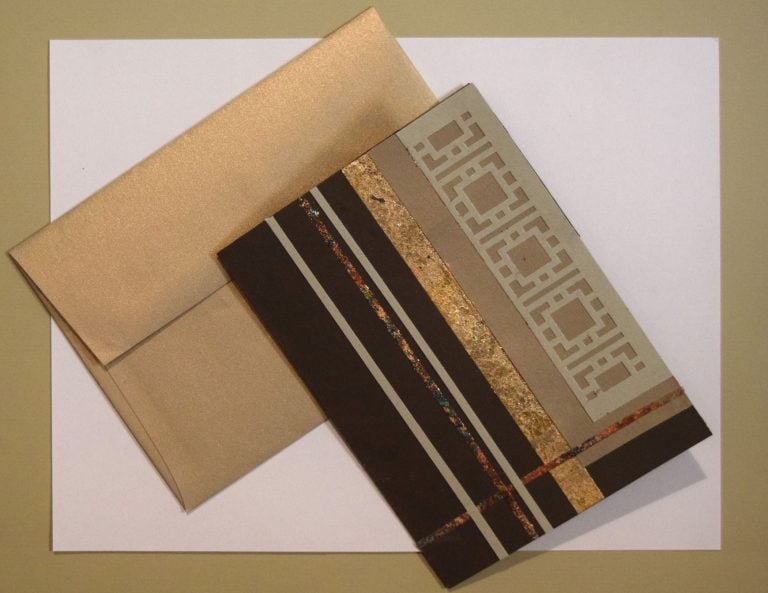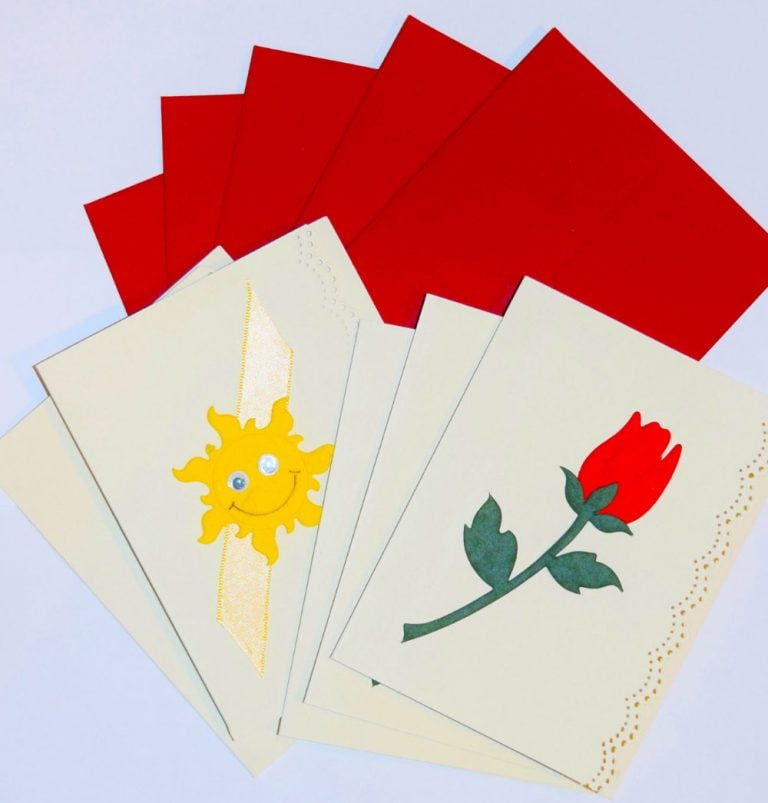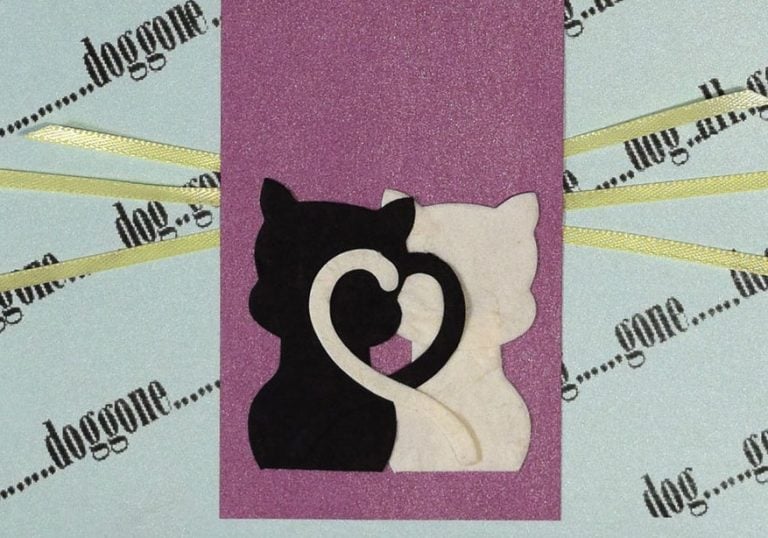Why Use Booklet Envelopes | Facts About Booklet Envelopes
A booklet envelope, or ‘booklet’ for short, is a type of large envelope that you can use to send documents. It shares characteristics with another large letter-size envelope – like being large enough for a single sheet of paper and having enough room to seal it closed – but with the added benefit of having a flap on the longest side, allowing extra space as you insert your material. We recommend using these types of envelopes when needing to send large-size papers or contracts, documents, etc.
What is a booklet envelope?
A booklet envelope is a type of envelope that opens on the side and is constructed with side seams. It’s used to send documents such as brochures, pamphlets, or other printed materials.
The name “booklet” comes from its resemblance to an open book when it’s being mailed. The front of the envelope will have your return address printed on it, while the back has space for you to write down additional information like who sent the mailing and what’s inside (if necessary).

Why use booklet envelopes?
You may be wondering what the benefits of using a booklet envelope are. Well, let me tell you!
- They’re easy to use. You open them up, put your stuff in there and close it again! It’s that simple. You don’t even have to worry about folding them closed or anything like that because they come with built-in flaps at the top that you fold over and secure with tape or glue (depending on which type of booklet envelope).
- You’re struggling to find the right-sized envelope for your pamphlets. You don’t want to damage your materials, and you don’t want to waste time and money purchasing the wrong envelopes. Choose from a wide range of booklet sizes that are perfect for your needs, with a broad size range from small to large; you are sure to find a booklet envelope that will adequately hold your contracts, printed material, and more.
Booklet Envelopes – The best choice for sending documents
The best choice for sending your documents is to use a booklet envelope. These envelopes are perfect for any mailing and come in many different sizes, ranging from small to large.
The booklet style lets you keep all your information together without cramming it up while sending it through standard postal systems. It also makes it easier on whoever receives them because they don’t have as much work separating everything out once they get their package!
Booklet envelopes are a popular type of business envelope that have multiple advantages over other types of envelopes. They are particularly useful for mailing large, bulky items, such as brochures, catalogs, and booklets.
Unlike catalog envelopes, which have their flap on the short end, booklet envelopes have the flap on the long side, making them easier to stuff manually. This is especially important when dealing with large quantities of envelopes.
Booklet envelopes are available in various sizes, including 6 x 9, 9 x 12, and 10 x 13, and are typically made of the same paper weight as catalog envelopes. Booklet envelopes are a great option for your business’s mailing needs.
These styles of envelopes are popular for sending brochures, catalogs, and booklets. Here are some facts about booklet envelopes that might help you decide if they are the right choice for your project.
1. Booklet envelopes are designed to hold unfolded sheets of paper with easy insertion.
2. Booklet envelopes come in a variety of sizes. The most common sizes are 6″ x 9″, 9″ x 12″, and 10″ x 13″.
- 6 x 9 (#6-1/2 Booklet) — These are best for smaller materials like pamphlets, booklets, small catalogs, or printed fliers. This form is will hold a letter-size paper (8.5×11) if folded 1-time. (fold in-half)
- 9 x 12 (#9-1/2 Booklet) — The perfect size to fit letter-size paper (8.5×11) unfolded. Insurance companies often use these envelopes to send out new policy documents or renewals. Medium-sized magazines can also be sent in them.
- 10 x 13 (#13 Booklet) — These are oversized for larger materials, or when your letter-size stack is too thick for 9×12, then the 10×13 will typically handle the extra thickness.
3. Material: Booklet envelopes are made from a variety of materials, including paper, plastic, or a combination of both. The choice of material may depend on the type of item being mailed and the desired level of protection. The most common selections are made from paper.
4. Printing: Booklet envelopes can be printed with custom designs or branding, making them a great marketing tool for businesses. Printed booklet envelopes can also help to make mail pieces more distinguishing and identifiable. Depending on your office, some booklets can be printed in-house while others are sourced out to be printed by professional print houses.
5. Security: Booklet envelopes can come with various security features to help protect the contents during shipping and delivery. These features may include tamper-evident closures, tear-resistant materials, or even encryption keys. This is a less common yet available feature from certain manufacturers.
Pros and Cons of Booklet Envelopes
Lets Review some Pros
Pros:
- Ideal for holding larger materials that do not fit in standard envelopes
- An efficient and cost-effective way of getting marketing materials to customers
- More noticeable than standard envelopes, increasing the likelihood of being opened
- Different sizes and shapes prompt curiosity, making it a valuable tool for direct mail marketing
- Easier to fill and accessible interior compared to other large envelope designs such as catalog envelopes
- Ideal tool to help grow businesses and for personal organization
Lets Review some Cons.
Cons:
- Limited to larger materials and may not be suitable for smaller items
- May not be as common or suitable for shipping premium materials due to the potential for bending during postage
- Limited colors and finishes, most commonly offered as a commodity white wove or kraft/manila shade
In summary, booklet envelopes are a versatile and practical option for businesses and individuals who need to mail larger items or marketing materials. They provide added protection and security for content while also allowing for branding and customization.
Where to buy booklet envelopes?
There are several ways to get your hands on these versatile-sized envelopes. You can order them online, go to a local supplier or purchase them there if you have access to wholesale suppliers.
At PaperPapers, we offer a full range that is sure to fit your requirements. We encourage you to work with standard sizes as requesting a unique make requires high minimums, and unit price increases considerably.
What’s the difference between booklet and catalog envelopes?
What’s the difference between booklet and catalog envelopes? The quick answer is that a booklet-style envelope has an opening on the long side of the envelope, while a catalog-style envelope has an opening on the short side.

Booklet Envelopes
Booklet = Open Side (O.S.)
Open side envelopes have the opening or seal flap on the
long dimension. When an envelope opens on the longest
side, it’s called a booklet envelope or an open
side envelope.

Catalog Envelopes
Catalog = Open End (O.E.)
Open end envelopes have the opening or seal flap on the
short dimension. When an envelope opens on the shortest
side, it’s called a catalog or an open end envelope.
Both Booklet and Catalog envelopes can be made from econo-grade white wove up to high-quality paper that is thick and durable. This helps to ensure that your content arrives in good condition.
Review this handle booklet envelope size chart. Additionally, scroll to the bottom of this article to review our helpful size comparison chart. Identifying the envelope number can be challenging and our chart will help you cross reference same size envelope yet identified by different ‘styles’.
Booklet Envelope Size Chart
Review this helpful booklet envelope size chart. Additionally, scroll below to also review a cross-reference chart showing booklet and catalog style #’s.

Booklet and Catalog Envelopes Cross Reference Chart
Review our helpful size comparison chart. Identifying the envelope-style number can be challenging. Our chart will help you cross-reference the same and similar size envelopes, comparing them to other ‘styles’.
Conclusion
When it comes to sending unfolded sheets of paper, booklet envelopes are an excellent choice. They come in various sizes, colors, and finishes to suit your project needs. In addition, they are durable and eco-friendly, making them suitable for both businesses and individuals.
Constructed with side seam, is ideal for annual reports, brochures, sales materials, and a variety of printed material. The open side makes it acceptable for automatic insertion and ideal for volume mailing.
Choosing the right size envelope is essential based on the occasion and content. Keep in mind that larger sizes may require additional postage costs.
The booklets are a great way to send documents. They can be used for anything from invoices and receipts to magazines and catalogs. They are also a great option if you want something that is more eco-friendly than traditional mailers or envelopes because they use less paper than their counterparts while still providing the same level of protection for your items inside.









One Comment